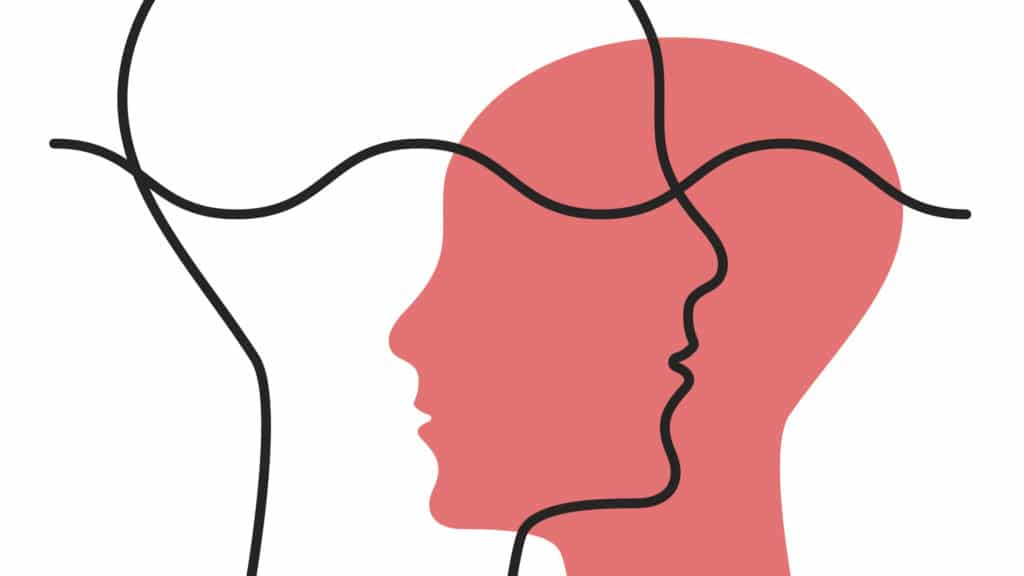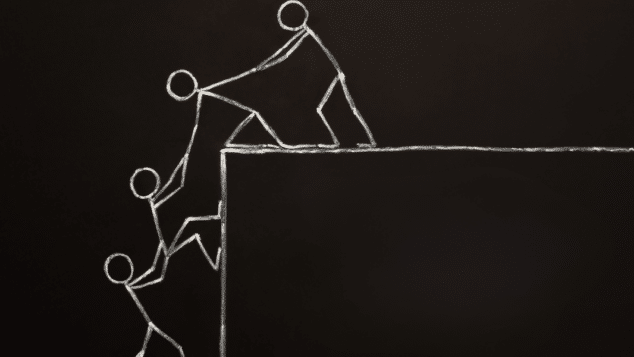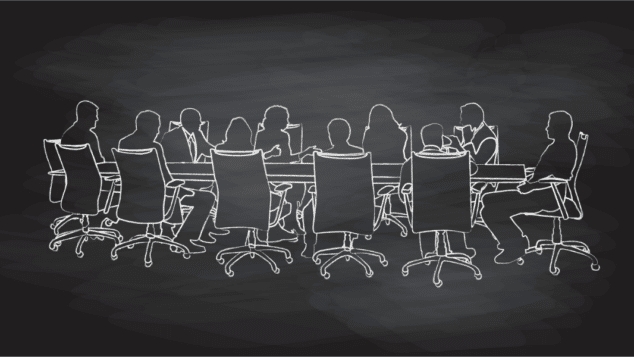The New Leadership Model

The last year has been filled with struggle and resilience. The COVID-19 pandemic, the Black Lives Matter movement and the Jan. 6 insurrection on the U.S. Capitol are barometer-bursting crises on their own. But together, they have contributed to a complex web of social, political and civic unrest. Their ramifications are both global and local, affecting us personally and professionally. Can associations help us navigate the change needed and guide us toward a more restorative culture?
Authentic and empathetic leadership are models that could pave the way. On the surface, they may appear to resemble personal traits rather than leadership concepts — along the lines of the folksy adage, “don’t judge someone until you’ve walked a mile in their shoes.” But even the Harvard Business Review (HBR) has devoted considerable ink to authenticity and empathy in leadership, identifying them among three core drivers of trust.
“People tend to trust you when they think they are interacting with the real you (authenticity), when they have faith in your judgment and competence (logic), and when they believe that you care about them (empathy),” argued Harvard Business School Professor Frances X. Frei and entrepreneur Anne Morriss in their article “Begin with Trust” in HBR’s May/June 2020 issue.
“Trust is the basis for almost everything we do,” Frei and Morriss wrote. “It’s the foundation on which our laws and contracts are built. It’s the reason we’re willing to exchange our hard-earned paychecks for goods and services, to pledge our lives to another person in marriage and to cast a ballot for someone who will represent our interests. It’s also the input that makes it possible for leaders to create the conditions for employees to fully realize their own capacity and power.”
Authenticity Within Associations
To a varying extent, association leaders are practicing authenticity and empathy in the workplace, spurred by a pandemic-induced remote work environment and a commitment to diversity, equity and inclusion (DEI). But just what that authenticity and empathy look like depends on the association — and the leader.
“There is always a struggle as a leader to being ‘more’ than I am,” says Marvin Lindsey, CEO of the Community Behavioral Healthcare Association of Illinois (CBHA). “I believe being authentic is learning to honestly accept who I am, both assets and liabilities, and showing that to the public. Leadership is not about being an emotional robot, but also not overly reacting to a situation either.”
To that end, Lindsey is a proponent of rethinking beliefs and challenging assumptions — just because you’ve always done things one way doesn’t mean you have to continue to. “I try to practice these principles in my interactions with my members and staff on a day-to-day basis,” Lindsey says.
Vulnerability is another characteristic of authenticity, says Jose Segarra, an account executive at Bostrom, an association management services company. He is drawn to the thinking of social scientist, professor, author and podcast host, Brené Brown, who said: “Authenticity is the daily practice of letting go of who we think we’re supposed to be and embracing who we are.”
“Vulnerability is uncomfortable, but it is the only way we can be authentic,” Segarra says. “We are vulnerable when we show others who we are.” As a leader, he has shared with his staff professional vulnerabilities, including how he likes things done when planning a big project. He’s also shared personal vulnerabilities, such as telling his staff when he went through a breakup.
“It doesn’t mean you have to share absolutely everything. And, of course, don’t share anything inappropriate,” Segarra adds.
The benefit is that by sharing parts of who you are, staff understand where you are coming from and what you are going through. And there is mutuality in this approach. “I encourage them to do the same. To come to work knowing that they can be authentic and that we won’t judge them for being authentic,” Segarra says.
Authenticity takes courage. Mary Lynn Fayoumi, president and CEO of HR Source, believes there is no one-size-fits-all approach for authentic leaders and that they can be successful with completely different leadership approaches. “I practice authentic leadership by sharing my successes and failures with my board and team,” she says. “I don’t pretend to know all of the answers, I highlight mistakes that I make personally or have been involved with, and
I encourage others not to be afraid to try new things and fail. During the pandemic, we have experimented with many new member benefits. Not all of them have been met with success, which has provided learning opportunities for our team and improved service to our members.”
Segarra agrees with that assessment — particularly around providing leeway for failure — again citing Brown: “No vulnerability, no creativity. No tolerance for failure, no innovation. It is that simple. If you’re not willing to fail, you can’t innovate. If you’re not willing to build a vulnerable culture, you can’t create.”
Demonstrate Empathy
Authenticity and empathy are breaking through the noise and contributing to DEI efforts. In a Wall Street Journal Magazine interview this year, plus-size model Ashley Graham noted the traits essential to her success are “being myself, being authentic and being kind.” She relied on these traits to ascend the heights as a supermodel and businesswoman in the fashion industry, which is notorious for marginalizing fuller-bodied and curvier people like her.
Last year, Kamala Harris became the first woman, first Black person and first South Asian American to be elected vice president of the United States. When she gave her acceptance speech, there were large video displays buffeting the stage with the message, “The People Have Chosen Empathy.” For the occasion, Harris intentionally wore head-to-toe white, a color choice that has deep significance in politics. Dating back to the suffrage movement, women have worn white as a symbolic way of resisting gender inequality. During her speech, she was in empathetic solidarity with, as Harris stated, “the generations of women — Black women, Asian, white, Latina, Native American women — who, throughout our nation’s history, have paved the way for this moment tonight. Women who fought and sacrificed so much for equality and liberty and justice for all.”
Each of us can build a capacity to empathize and contribute to creating an environment of trust in which all feel safe bringing their whole self to work. Empathy is a core tenet of DEI that should be integrated into the values of an association, its culture, its activities and how it conducts business.
Even the Bard of Avon weighed in on empathy nearly 400 years ago. In the new book, Of Human Kindness: What Shakespeare Teaches Us About Empathy, Drexel University Professor Paula Marantz Cohen propounds that The Merchant of Venice, Othello and King Lear are plays that “elicit empathy for people whose backgrounds, situations and bodies are different from our own — characters we might even dismiss, dislike or even abhor.” She adds that these lessons from literature are particularly relevant today.
“The anger and unwillingness of many Americans to listen to those with different opinions is a serious societal problem,” Cohen said in a Wall Street Journal interview earlier this year. “It is easy to react thoughtlessly to people who seem alien; it is much harder to see things from their point of view, to recognize what influences, in which we may be complicit, have formed or deformed their characters. … When we address one another with empathy, disagreements don’t go away, but compromise and unity are easier to reach.”
So how do you develop empathy and make it part of your association’s culture? Empathy takes regular practice, along with self-awareness and an openness to accept feedback, including critique, Fayoumi says. “Leading by example means thinking about the behaviors you want to model in your organization and letting others look behind the curtain at your authentic self, not just on special occasions, like a holiday party, but on a regular basis,” she says. “Trust is built over time through many different experiences and has to be earned. People watch and learn from leaders, so leaders need to be mindful of what they’re teaching.”
Lindsey says empathy begins with developing the ability to take a self-inventory of all member and staff relationships. “I think it is up to me as a leader in our association to create an environment where people feel safe. I do this by first showing interest in their lives, next by being honest when I am communicating to them, by keeping them informed about anything that impacts them and also respecting when we have confidential discussions. That also includes that I do not discuss anything about one of their coworkers with them,” Lindsey says.
Gaining different perspectives is an important part of the empathetic leadership equation. “We exhibit empathy when we try to understand another’s perspective or situation,” Segarra says. “Typically, that has a lot to do with emotions. We have to, at times, shift our focus from the goals of the organization, or whatever project we are going through, in order to ensure that our most valuable resources — our staff — are taken care of in a holistic way. Only when staff sees leaders of organizations practicing empathy, authenticity and vulnerability will they know it’s OK for them to do that as well. Most importantly, pay attention to the instances when those same things are happening and acknowledge or celebrate them! Let them and others know that it is OK.”
What’s Worked During the Pandemic
For more than a year, the COVID-19 pandemic has tested association leaders’ mettle. This includes the abrupt pivot to remote work, as well as relying on technology for the delivery of member products and services.
Could leadership be replaced by technology? Maybe, according to software company Citrix’s recent report, “Work 2035: How People and Technology Will Pioneer New Ways of Working,” which is based on the responses of 500 executives and 1,000 employees at large and mid-sized companies in the United States and Europe. One-third of interviewed employees said leadership will be “partially or completely replaced by technology” by 2035. Although only a small percentage of executives agree with that, there’s a shared belief that automation will have some impact.
The report notes that the pandemic has given association executives “a crash course in some essential characteristics of leadership in that emerging environment: more tech savvy, more focused on speed, more adaptive, more concerned with innovation and the collaborative processes that stoke it.” The pandemic has also given a crash course on compassion, requiring leaders to support employees and members who’ve experienced displacement, according to the report.
HR Source’s staff of 40 has been working almost entirely remotely during this time, with their headquarters in west suburban Chicago remaining empty. “My word of the year is grace, and my intention is to give grace,” Fayoumi says. “There’s no wall between the workplace and home anymore, so there’s no question that employers are going to be faced with many more nuanced and reasonable requests to work remotely, to live elsewhere, to work alternative schedules — to figure out how to continue to maintain their employment while also living their lives.”
Organizations will have to think about what they need, where people can get work done and how employees can be most productive. “There are many advantages to being flexible that are tied to business outcomes,” Fayoumi says. In the past, she says, companies may have thought that this flexibility was strictly a benefit for employees. “But there’s a growing understanding that the benefits are on both sides — that it can benefit the employer, too.”
CBHA has a staff of five that has always worked remotely. Even so, Lindsey says that new challenges have emerged. “The pandemic has affected my staff in different ways, whether having children being schooled at home, concern about elderly parents, being constantly isolated or less active. A part of my job has been to reach out individually to all my staff to check in once a week about non-work-related issues. I have been intentionally more optimistic and focused on actions we can take now to improve our situation post-COVID-19.”
Segarra agrees and says that it is important to reinforce a sense of belonging and purpose while understanding that working from home may be a chaotic experience for some and isolating for others. “As leaders, we should maintain frequent communication and engagement with staff to ensure they remain mentally prepared to face the work challenges present and to come.”
Personal connections contribute to productivity and organizational effectiveness. In the absence of in-person meetings, watercooler talk and coffee breaks, an extra effort should continue to be made to connect with staff and board leaders.
Segarra says that he has done several fun and inexpensive or free exercises with his board. For example, several “icebreaker” websites facilitate small groups of people who spend a short amount of time answering questions to get to know each other better. Bostrom also has hosted virtual game nights, happy hours and lunches, as well as extended virtual meetings, to accommodate informal conversation and friendly chats.
An online trivia game and a virtual cooking event were well-received for CBHA, according to Lindsey. Plus, monthly virtual meetings of CBHA’s board, staff and committee chairs have had increased attendance compared to in-person meetings — an unexpected upside that has made meetings more inclusive.
Keep It Real
During the pandemic, Lindsey has often thought of his late mother, who was a treasure trove of wisdom. One of her sayings that has helped carry him through is: “You can’t keep reheating old soup; it ain’t gonna taste right.” To him, authenticity and empathy are essential ingredients in keeping association workplaces equitable, inclusive and functioning effectively.
Fayoumi’s aunt, who is a member of the Franciscans, a Catholic religious order, is fond of quoting St. Francis of Assisi: “Preach the gospel always, and if necessary, use words.” Basically, don’t tell people who you are, show them. “That’s why I think empathy is just such a perfect example,” Fayoumi says. “You can never, never make a mistake when you err on the side of generosity. And you can’t make a mistake if you give someone grace. To see those happening in the workplace, now more than ever, is a beautiful thing.”
Self-awareness: an ongoing process of reflection by the leader of their own strengths, weaknesses and values
Relational transparency: the leader openly shares their own thoughts and beliefs, while minimizing any inappropriate emotions
Balanced processing: the leader solicits opposing viewpoints for fair consideration
Internalized moral perspective: the leader adheres to a positive ethical foundation that allows them to be resistant to outside pressures
Tags
Related Articles
Great Bosses, Greater Impact: Leadership Lessons that Stick
The best bosses leave more than instructions—they leave echoes of confidence, creativity, and leadership that...
4 Key Strengths of an Association’s Board
A 2023 study asked association leaders which strengths are vital to a board. Read what...
CEO Perspectives on Association Forum’s Governance Professional Practice Statments
Association Forum members have access to professional practice statements. A committee reviews these statements annually....




